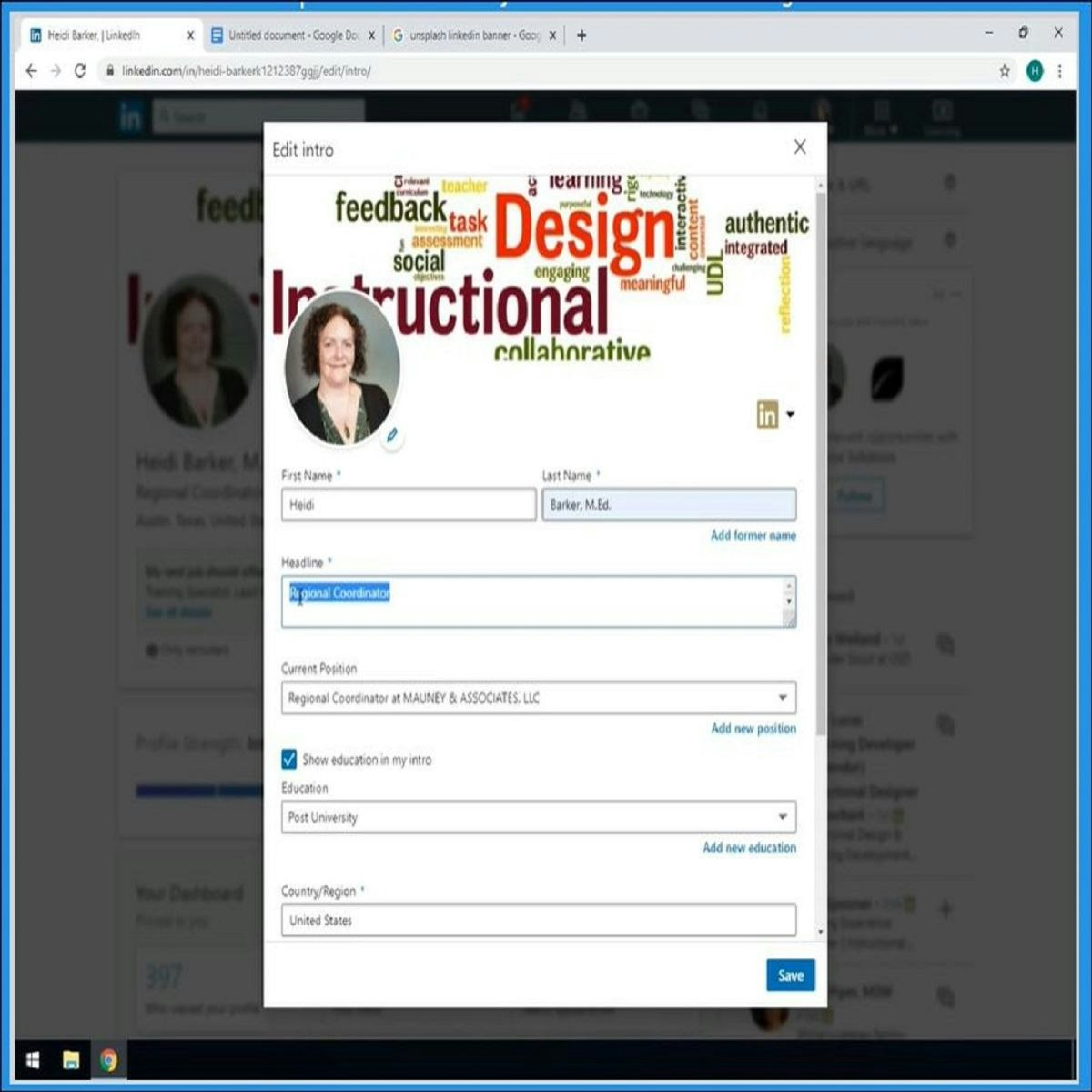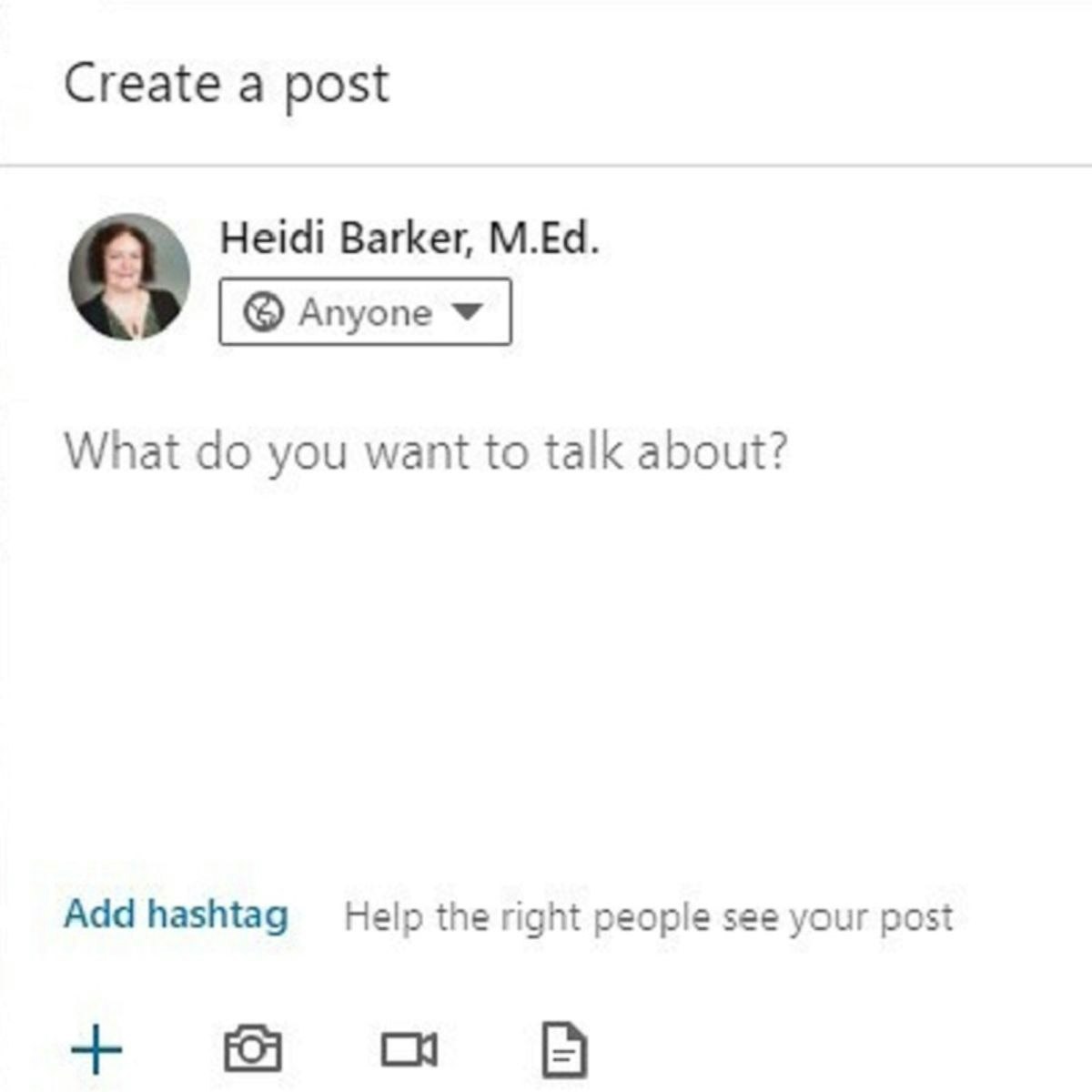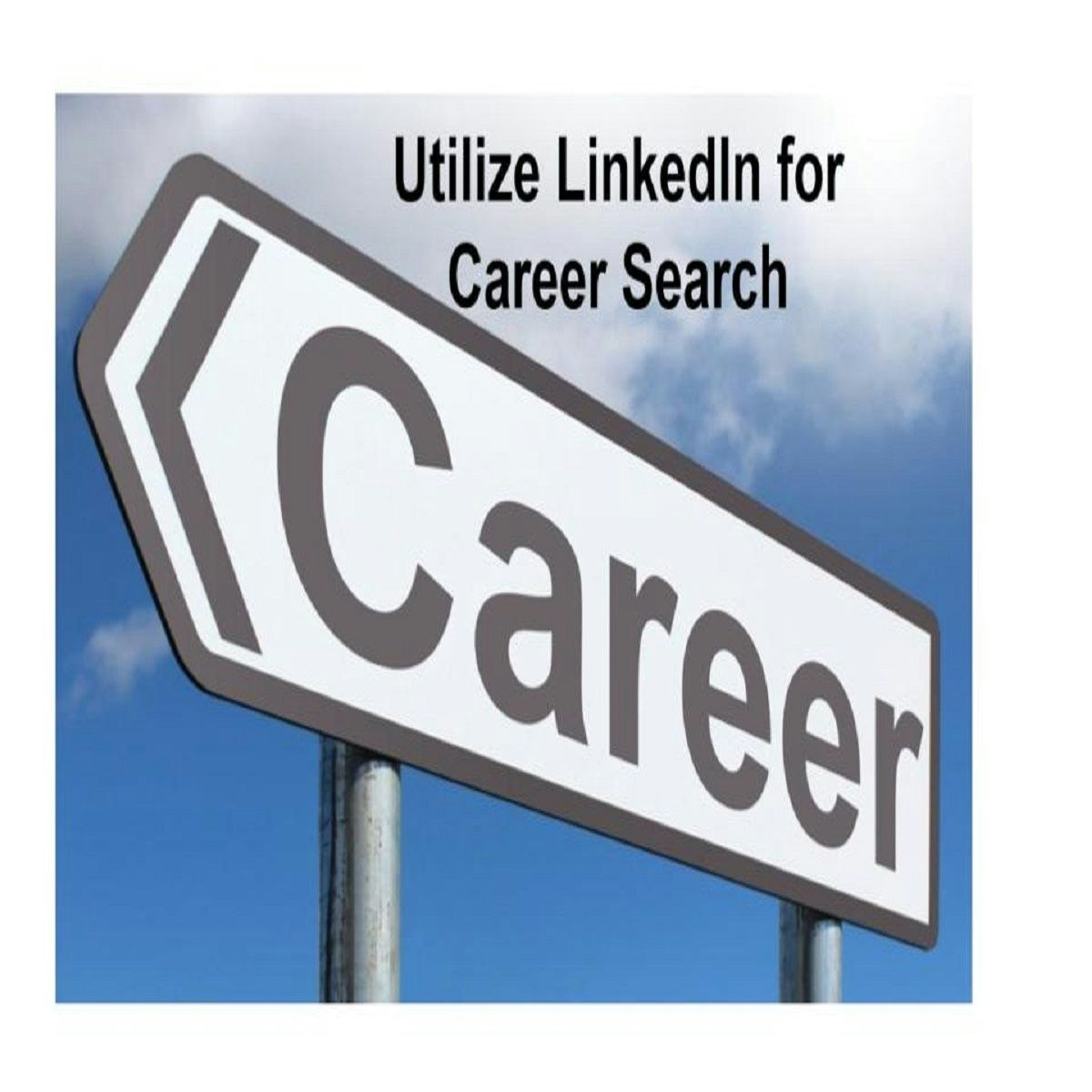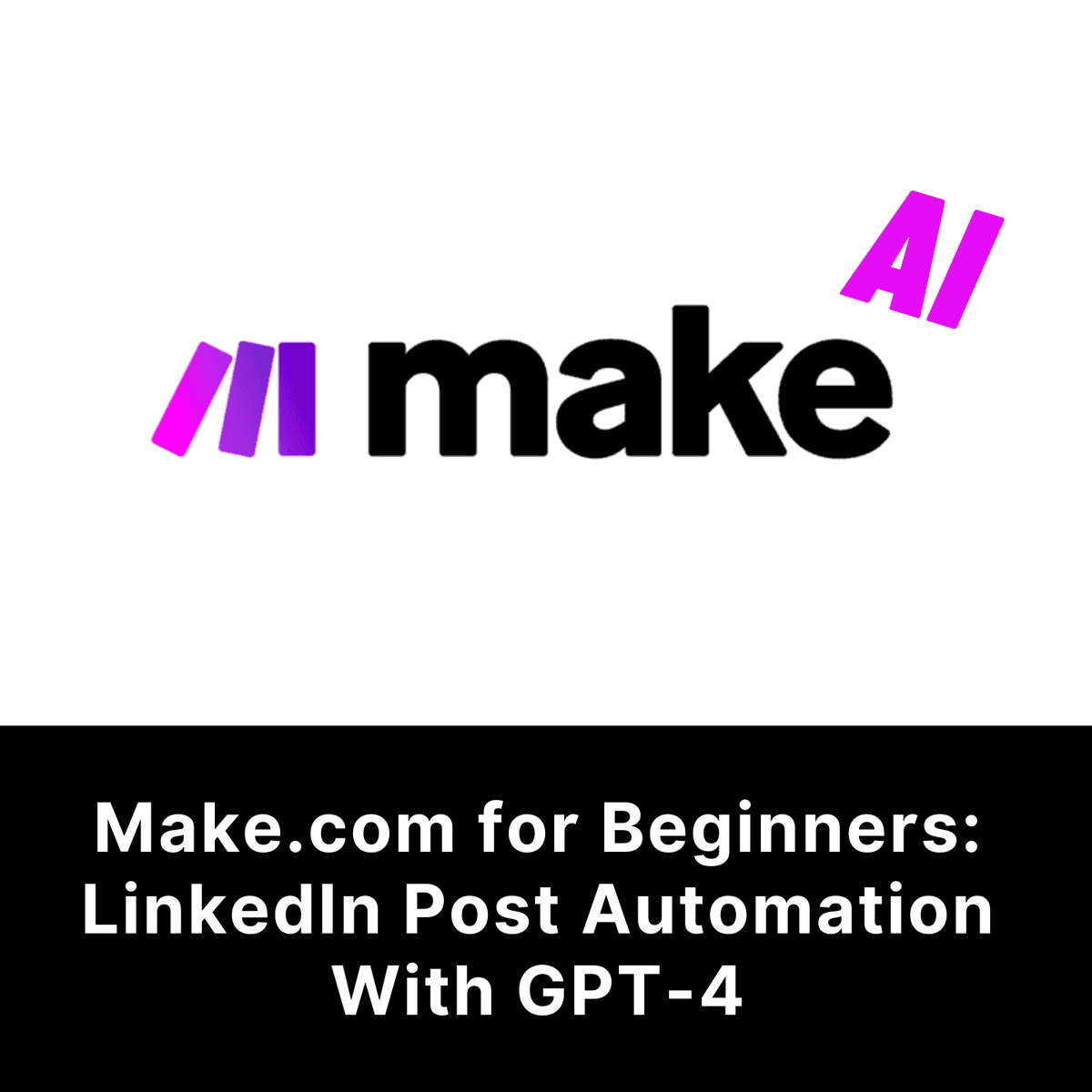Mastering LinkedIn: Your Professional Online Presence
LinkedIn stands as the world's preeminent online platform dedicated to professional networking and career development. At its core, it serves as a digital space where individuals can create professional profiles, connect with colleagues and industry peers, share expertise, discover job opportunities, and follow company updates. It functions as a vast, interconnected directory of professionals across nearly every industry and geographic location, facilitating connections that might otherwise be difficult to establish.
For many, LinkedIn offers exciting possibilities. It allows users to showcase their skills and experience to a global audience, potentially attracting recruiters and new business prospects. It also provides a rich environment for learning about industry trends, engaging in professional discussions, and building a personal brand. Whether you are seeking employment, aiming to expand your professional circle, or positioning yourself as a thought leader, LinkedIn provides tools and a community to support these goals.
Introduction to LinkedIn
What is LinkedIn?
LinkedIn is fundamentally a social networking service, but with a distinct focus on professional interaction and career advancement. Unlike platforms primarily geared towards personal updates and casual socialising, LinkedIn is designed for users to manage their professional identity online. This involves creating a detailed profile that often resembles a dynamic, interactive resume, highlighting work experience, education, skills, and accomplishments.
The platform's primary purpose extends beyond simple profile hosting. It enables users to build and maintain a network of professional contacts, known as "connections." Through these connections, individuals can share industry insights, publish articles, participate in group discussions, endorse colleagues' skills, and seek or offer professional recommendations. Businesses also leverage LinkedIn extensively for recruitment, marketing, sales prospecting, and brand building.
Its global scale means that users can connect with professionals not just locally, but across countries and continents. This makes it an invaluable resource for understanding international markets, finding collaborators abroad, or exploring job opportunities beyond one's immediate geographic area. The platform continuously evolves, adding features to support learning, events, and more nuanced forms of professional engagement.
A Brief History
LinkedIn was officially launched in May 2003, conceived by Reid Hoffman and founding team members from PayPal and Socialnet.com. Its initial growth was steady rather than explosive, focusing on building a trusted network for established professionals. Unlike many contemporary social platforms aiming for rapid, viral expansion, LinkedIn emphasized quality connections and verifiable professional identities from the outset.
Key milestones mark its evolution. The introduction of job postings and recruitment tools transformed it into a major player in the talent acquisition market. Features like LinkedIn Groups fostered niche communities around specific industries or interests. The ability for users to publish long-form articles established it as a content platform for professional thought leadership. Its Initial Public Offering (IPO) in 2011 signaled its maturity and economic significance.
Perhaps the most significant recent event was its acquisition by Microsoft in 2016. This integration has led to deeper connections with Microsoft's suite of products (like Office 365) and further investment in areas like LinkedIn Learning, solidifying its role not just in networking and recruitment, but also in professional education and skill development. The platform continues to adapt to the changing landscape of work and professional communication.
LinkedIn vs. Other Social Platforms
The core distinction between LinkedIn and other popular social media platforms like Facebook, Instagram, or X (formerly Twitter) lies in its explicit professional focus. While personal anecdotes or casual updates might be common elsewhere, content on LinkedIn generally revolves around career achievements, industry news, professional development, and business insights. The expectation is for interactions to maintain a level of professional decorum.
This difference shapes the type of content shared and the nature of connections formed. Users typically connect with colleagues, industry peers, potential employers, or clients, rather than close friends and family (unless they overlap professionally). Profile information centers on work history, skills, and education, rather than personal hobbies or life events, though sharing aspects of one's personality professionally is becoming more common.
Furthermore, LinkedIn offers specialized tools absent on other platforms, such as detailed job search filters, specific recruitment features for companies (Talent Solutions), sales prospecting tools (Sales Navigator), and an integrated online learning platform (LinkedIn Learning). These functionalities underscore its design as a utility for professional growth and business objectives, setting it apart from platforms centered primarily on entertainment or personal social connection.
Leveraging LinkedIn for Networking and Careers
Building a Powerful Profile
Your LinkedIn profile serves as your digital professional identity and is often the first impression you make on potential employers, clients, or collaborators. A well-crafted profile is crucial for visibility and credibility. This starts with the basics: a professional headshot, an informative headline summarizing your current role or career aspiration, and a compelling summary that articulates your key skills, experience, and professional goals.
Detailing your work experience and education provides essential background, but simply listing past roles is insufficient. Focus on accomplishments and quantifiable results wherever possible. Use bullet points to describe responsibilities and achievements clearly. Incorporating relevant keywords throughout your profile—in your headline, summary, experience descriptions, and skills section—is vital for appearing in searches conducted by recruiters and others using the platform.
The Skills section allows you to list specific competencies, which connections can then endorse, adding social proof to your claims. Seeking and giving thoughtful recommendations can significantly enhance your profile's authority. Regularly updating your profile with new achievements, projects, or certifications keeps it current and signals active engagement with your professional development. Consider adding relevant certificates earned from online courses; platforms like OpenCourser can help you find courses, and resources like the OpenCourser Learner's Guide explain how to showcase these achievements effectively on your profile.
These courses offer foundational knowledge for creating a strong profile and understanding LinkedIn basics.
For those looking for comprehensive guides, these books cover profile optimization and platform navigation in detail.
Effective Networking Strategies
Building a valuable network on LinkedIn requires more than just sending out connection requests. Strategic networking involves thoughtful engagement and relationship building. When requesting to connect with someone, always personalize the invitation message, briefly explaining why you want to connect or reminding them how you know each other. Generic requests are far less likely to be accepted.
Active participation is key. Engage with your network's content by liking, commenting thoughtfully, and sharing posts that you find valuable or relevant to your own audience. Sharing your own insights, industry news, or professional updates also helps maintain visibility and establishes your expertise. Participating in relevant LinkedIn Groups allows you to connect with professionals in your niche, ask questions, and contribute to discussions.
LinkedIn's InMail feature, often part of premium subscriptions, allows you to message users you aren't connected to, which can be useful for targeted outreach (e.g., contacting recruiters or potential clients). However, use it judiciously and professionally. Finally, endorsements and recommendations are reciprocal tools; endorsing others' skills and writing genuine recommendations can strengthen relationships and often leads to receiving them in return.
These courses delve deeper into networking strategies and leveraging LinkedIn for connections.
This book offers practical advice on building connections.
Job Seeking and Recruitment on LinkedIn
LinkedIn is a primary channel for both job seekers and recruiters. Its extensive job board allows users to search for openings using various filters like location, industry, experience level, and company. Setting up job alerts notifies you of new postings matching your criteria. Many companies allow candidates to apply directly through LinkedIn, sometimes using their profile information as a preliminary application (Easy Apply).
Understanding how recruiters use the platform is crucial for job seekers. Recruiters utilize LinkedIn Talent Solutions to actively search for candidates based on keywords, skills, experience, location, and other profile data. Optimizing your profile with relevant terms increases your chances of appearing in these searches. Using the "Open to Work" feature signals to recruiters that you are actively seeking opportunities, potentially increasing inbound interest.
Beyond actively applying, LinkedIn allows you to research companies, follow organizations you're interested in, and connect with employees who work there. This can provide valuable insights into company culture and potentially lead to informational interviews or referrals. Networking with recruiters and hiring managers in your target industry can also open doors to unadvertised opportunities.
These courses focus specifically on using LinkedIn for job searching and interacting with recruiters.
This book provides guidance on leveraging social media, including LinkedIn, for job hunting.
Integrating LinkedIn with Formal Education
LinkedIn in University Curricula
Many university programs, particularly in fields like Business, Marketing, Communications, and Human Resources, now recognize the importance of digital professionalism and incorporate LinkedIn training into their curricula. Students might learn how to build effective profiles, network strategically online, or use the platform for industry research as part of their coursework.
Understanding how to navigate professional online spaces is increasingly seen as a core competency for graduates entering the workforce. Integrating LinkedIn allows students to apply theoretical concepts learned in class—such as personal branding or market analysis—in a practical, real-world context. Professors might assign projects requiring students to connect with industry professionals or analyze company pages.
Students are encouraged to start building their professional presence on LinkedIn early in their academic careers. This not only helps them connect with peers, faculty, and alumni but also provides a platform to showcase academic projects, internships, and developing expertise long before graduation. An active, professional profile can be a significant advantage when seeking internships or entry-level positions.
Academic Applications of LinkedIn
Beyond its use in career preparation courses, LinkedIn can be a valuable tool within academic research and networking. Researchers can use the platform to identify and connect with experts in their field globally, potentially leading to collaborations, knowledge sharing, or participation in academic events. Following relevant university pages, research institutions, and academic journals keeps researchers informed about recent publications and developments.
LinkedIn's search functionality can assist in gathering preliminary data or identifying potential participants for certain types of research, particularly in business, social sciences, or industry studies (always adhering to ethical research guidelines). Academics can also use LinkedIn to disseminate their own research findings to a broader audience beyond traditional academic journals, increasing the impact and visibility of their work.
For PhD students and early-career academics, maintaining an updated LinkedIn profile serves as a professional CV, showcasing publications, conference presentations, teaching experience, and research interests. It complements traditional academic networking channels and can be particularly useful when exploring careers outside of academia or seeking industry partnerships.
Societal Impact Analysis
From a higher academic perspective, LinkedIn presents a rich field for scholarly analysis regarding its societal impact. Researchers in sociology, economics, media studies, and labor studies examine how the platform influences professional identity formation, the dynamics of social capital in career progression, and shifts in recruitment practices. The vast amount of data generated by user interactions offers opportunities for large-scale analyses of labor market trends and networking patterns, though access and ethical considerations are paramount.
Critical analysis also focuses on issues such as algorithmic bias in job recommendations or connection suggestions, potentially reinforcing existing inequalities in the labor market. The platform's role in shaping professional discourse and the potential for echo chambers or the spread of industry-specific misinformation are also areas of academic inquiry. Studies might investigate how LinkedIn's design and features influence user behavior and perceptions of professional success.
Furthermore, the platform's global reach invites research into cross-cultural differences in online professional networking and how LinkedIn adapts (or fails to adapt) to diverse cultural contexts. Analyzing LinkedIn's governance structures, privacy policies, and economic model provides insights into the broader platform economy and its implications for work and society.
Mastering LinkedIn Through Online Learning
Can You Learn LinkedIn Independently?
Absolutely. Mastering LinkedIn is highly achievable through self-directed learning. The platform itself offers help pages and tutorials, and a vast amount of free content—blog posts, articles, videos—exists online explaining its features and best practices. Because much of learning LinkedIn involves hands-on practice (building your profile, sending connection requests, engaging with content), independent exploration is often very effective.
The key to successful self-teaching is setting clear goals. Are you trying to find a job, generate sales leads, build a personal brand, or simply expand your network? Defining your objective helps you focus your learning on the most relevant features and strategies. Start with the basics—completing your profile thoroughly—and then gradually explore more advanced functionalities as needed.
Online resources, including comprehensive platforms like OpenCourser, make finding structured learning materials easier than ever. You can search for courses tailored to specific goals, from beginner introductions to advanced marketing techniques. Consistency and practical application are vital; treat your LinkedIn profile and activity as an ongoing project, applying what you learn regularly.
Finding Structured Learning Paths
While self-exploration is possible, many learners benefit from the structure provided by online courses. These courses often organize the vast possibilities of LinkedIn into logical modules, guiding users from fundamental profile setup to sophisticated networking and content strategies. They can provide a more efficient learning path compared to piecing together information from disparate sources.
Online courses cater to various needs. Some offer a comprehensive overview suitable for beginners, while others focus on specific applications like LinkedIn for Marketing, lead generation for sales professionals, or advanced techniques for recruiters. Look for courses that include practical exercises, case studies, and up-to-date information, as LinkedIn's interface and algorithms evolve over time. OpenCourser allows you to compare course syllabi, read reviews, and find options that fit your learning style and budget; be sure to check the deals page for potential savings.
These courses offer structured approaches to mastering LinkedIn for various purposes, including lead generation and general usage.
Demonstrating Skills Through Projects
Learning platform features is one thing; applying them effectively is another. Engaging in small, self-directed projects is an excellent way to solidify your LinkedIn skills and gain practical experience. For example, set a goal to optimize each section of your profile based on best practices learned. Then, challenge yourself to write and publish a short article on a topic relevant to your industry.
Another project could involve identifying 10 key people in your field you'd like to connect with and crafting personalized connection requests for each. You could also experiment with creating visual content for LinkedIn posts using tools like Canva or Visme, tracking which types of posts generate more engagement from your network. For those interested in sales or marketing, a project could involve using LinkedIn's search filters to build a list of potential leads based on specific criteria.
These hands-on activities not only reinforce learning but also produce tangible results—an improved profile, new connections, published content—that directly contribute to your professional goals. They transform passive knowledge into active skill application.
Consider these project-based courses for hands-on experience with specific LinkedIn tasks like design or ePortfolio building.
LinkedIn for Career Growth
Starting Your Career Journey
For individuals just starting their careers, including students and recent graduates, establishing a LinkedIn presence is highly recommended. Even without extensive work experience, a professional profile demonstrates initiative, seriousness about your career path, and digital literacy. It provides a platform to showcase academic achievements, relevant coursework, skills learned, and any internship or volunteer experience.
Use LinkedIn proactively during your initial job search. Follow companies you are interested in working for to stay updated on their news and job openings. Research industry trends and identify key people in your desired field. Connecting with alumni from your university who work in relevant roles can be a valuable source of advice and potential referrals.
Having a LinkedIn profile also makes it easier for recruiters to find you, even for entry-level positions. Ensure your profile clearly states your career interests and skills. A polished online presence can differentiate you from other candidates who may only submit a traditional resume.
Showcasing Early Experiences
Effectively presenting internships, volunteer work, part-time jobs, and significant academic projects on your LinkedIn profile is crucial when you have limited formal work experience. Don't just list the position or project title; describe your responsibilities and, more importantly, your contributions and the skills you developed.
Use action verbs and quantify achievements whenever possible. For instance, instead of saying "Helped with social media," try "Managed Instagram account, increasing follower engagement by 15% over three months." Highlight transferable skills like teamwork, communication, problem-solving, or specific software proficiency gained through these experiences.
Requesting recommendations from supervisors, mentors, or professors associated with these early experiences can add significant weight to your profile. A positive recommendation provides external validation of your skills and work ethic, which can be particularly impactful for entry-level candidates.
These courses offer guidance on job searching, resume building, and interviewing, often incorporating LinkedIn strategies.
Advancing Your Career with LinkedIn
For mid-career professionals, LinkedIn transitions from being primarily a job-seeking tool to a platform for ongoing career management, industry engagement, and leadership building. Regularly updating your profile with new skills, accomplishments, and promotions ensures your professional narrative remains current.
Actively engaging with industry news and discussions helps you stay informed and demonstrates your expertise. Sharing valuable content, writing articles, or commenting thoughtfully on others' posts can establish you as a thought leader in your field. This increased visibility can attract opportunities, including speaking engagements, collaborations, or job offers.
Strategic networking remains important for career advancement. Use LinkedIn to maintain relationships with former colleagues, connect with peers at industry events, and identify mentors or sponsors. The platform can also be used for competitive intelligence, understanding industry shifts, and identifying potential career pivots or advancement opportunities within or outside your current organization.
Consider these books for insights into visual storytelling and social media strategy, applicable to building a professional brand.
Navigating LinkedIn Responsibly
Privacy and Data Usage
Like any online platform, using LinkedIn involves sharing personal and professional information. It's essential to understand and manage your privacy settings effectively. LinkedIn provides granular controls allowing you to decide who can see your profile updates, connections list, and other activity. Regularly review these settings to ensure they align with your comfort level and professional goals.
LinkedIn collects user data to personalize the user experience, suggest connections or jobs, target advertising, and improve its services. Familiarize yourself with LinkedIn's Privacy Policy and User Agreement to understand how your data is collected, used, and shared. Being aware of these practices allows you to make informed decisions about the information you provide.
Consider the implications of data visibility. While a public profile increases discoverability, be mindful of the information shared, especially contact details or sensitive career information. Balance the benefits of visibility with potential privacy risks, adjusting settings accordingly.
Authenticity and Misinformation
Maintaining authenticity is crucial for building trust on a professional platform. While it's important to present yourself effectively, significantly embellishing your experience or skills can damage your reputation if discovered. Strive for accuracy and honesty in all sections of your profile and in your interactions.
LinkedIn, like other social platforms, is not immune to misinformation or low-quality content. Be critical of the information you encounter, especially claims that seem exaggerated or unsubstantiated. Verify information from credible sources before sharing it with your network. Report profiles or content that appear fake, misleading, or unprofessional.
The pressure to maintain a constantly positive professional image can sometimes feel overwhelming. Remember that authentic engagement, including sharing challenges or lessons learned (appropriately), can often resonate more strongly than a facade of perpetual success. Focus on providing genuine value and fostering meaningful connections.
Algorithmic Fairness
LinkedIn utilizes algorithms extensively to personalize user feeds, recommend connections, suggest jobs, and rank search results. While these algorithms aim to enhance user experience and relevance, they can inadvertently introduce or perpetuate biases. For example, algorithms might learn patterns from historical data that reflect existing societal biases in hiring or networking.
This can lead to concerns about fairness, such as certain demographic groups being disproportionately recommended for specific types of jobs or having less visibility in recruiter searches. While LinkedIn works to mitigate bias, users should be aware that algorithmic recommendations are not always neutral or objective representations of opportunity.
Understanding that algorithms shape your experience encourages a more proactive approach. Don't rely solely on algorithmic suggestions; actively use search filters, explore diverse groups, and build connections beyond algorithmically recommended profiles to ensure exposure to a wider range of opportunities and perspectives.
LinkedIn Around the World
Global Reach and Local Differences
LinkedIn boasts a massive global user base, making it a powerful tool for international networking and business. However, its adoption rate and cultural significance vary significantly across different countries and regions. In some markets, it's the undisputed primary platform for professional life, while in others, local competitors or different networking norms might prevail.
Cultural nuances can influence how people use the platform. Communication styles, approaches to self-promotion, and expectations around networking can differ. What constitutes an appropriate connection request or profile tone in one culture might be perceived differently in another. Awareness and sensitivity to these differences are crucial when engaging with an international network.
Professionals working across borders or seeking international opportunities should consider tailoring their profile and communication style accordingly. Highlighting international experience, language skills, and cross-cultural competencies can be advantageous. Researching the specific professional etiquette of target countries can also improve interaction effectiveness.
Strategies for Multinational Use
Multinational companies heavily utilize LinkedIn for global talent acquisition, employer branding, and market intelligence. They often maintain localized company pages and run targeted recruitment campaigns in different regions. LinkedIn offers features supporting multiple languages, allowing users to create profile versions in different languages to cater to diverse audiences.
For individuals and businesses, leveraging LinkedIn for multinational purposes requires a strategic approach. This might involve joining international industry groups, following key companies and influencers in target markets, and actively engaging with content relevant to those regions. Using advanced search filters can help identify potential partners, clients, or contacts in specific countries.
Building a truly global network takes time and effort. Focus on providing value and demonstrating cultural awareness in your interactions. Understanding the specific business landscape and professional norms of different regions enhances your credibility and effectiveness when using LinkedIn for international goals.
LinkedIn in Emerging Economies
LinkedIn's role and impact in emerging markets are continually evolving. In many developing economies, the platform serves as a crucial bridge connecting local professionals to global opportunities, knowledge resources, and international networks. It can be particularly valuable for entrepreneurs, freelancers, and individuals seeking to enhance their skills and career prospects.
However, challenges exist, including lower internet penetration rates, language barriers, and varying levels of digital literacy. The platform's features and content might not always be perfectly aligned with local market needs or cultural contexts. Competition from local job boards or social platforms can also influence its adoption.
Despite these challenges, LinkedIn represents a significant opportunity for professional growth and economic development in many emerging markets. Its potential to facilitate skills development through LinkedIn Learning, connect local talent with multinational corporations, and support entrepreneurial ecosystems highlights its growing importance on the global stage.
The Business of LinkedIn
How LinkedIn Makes Money
LinkedIn operates on a diversified revenue model, primarily drawing income from three main sources. Talent Solutions offers premium recruitment tools for companies, allowing them to find, contact, and manage potential candidates; this is LinkedIn's largest revenue stream. Marketing Solutions provides advertising options for businesses to reach specific professional audiences on the platform.
Premium Subscriptions offer enhanced features for individual users, categorized into tiers like Premium Career (for job seekers), Premium Business (for networking and insights), Sales Navigator (for sales professionals), and Recruiter Lite (for individual recruiters). These subscriptions provide benefits like increased profile visibility, access to InMail credits, advanced search filters, and online learning course access.
LinkedIn Sales Solutions offers sophisticated tools designed to help sales professionals find and engage with leads and prospects more effectively. The relative importance of these streams may shift, but they collectively underscore LinkedIn's position as a platform facilitating key business functions: hiring, marketing, and sales, alongside individual career development.
Impact on Hiring and Talent
LinkedIn has profoundly reshaped the landscape of recruitment and talent acquisition. It provides recruiters with unprecedented access to a vast, searchable database of passive and active candidates, often reducing reliance on traditional job boards or recruitment agencies for sourcing talent. This can potentially lower hiring costs and speed up the recruitment process for many organizations.
The platform enables more targeted and proactive recruiting strategies. Companies can build talent pipelines, engage potential future hires, and enhance their employer brand to attract top candidates. For job seekers, it offers greater transparency into the job market and direct access to recruiters and hiring managers. Data from sources like the U.S. Bureau of Labor Statistics often highlight the increasing role of online platforms in modern recruitment practices.
However, this shift also presents challenges. The sheer volume of applications through platforms like LinkedIn can overwhelm recruiters. Concerns also exist about potential biases in algorithmic sourcing and whether over-reliance on LinkedIn might exclude qualified candidates who are less active on the platform.
This book discusses using social media tools for business, relevant to understanding LinkedIn's market role.
Competitive Landscape
While LinkedIn holds a dominant position in the broad professional networking space, it faces competition from various angles. General social media platforms like Facebook and X sometimes incorporate job-finding features. Specialized, niche professional networks cater to specific industries like academia (ResearchGate), technology (GitHub for developers), or creative fields (Behance).
Traditional job boards like Indeed and Monster remain significant competitors in the job listings market. Furthermore, the rise of freelance platforms (Upwork, Fiverr) provides alternative channels for connecting talent with project-based work. Applicant Tracking Systems (ATS) used internally by companies also play a critical role in managing the hiring process.
Despite this competition, LinkedIn's unique combination of a massive user base, rich profile data, networking features, and integrated business solutions (recruitment, sales, marketing, learning) gives it a strong competitive advantage. Its strategy often involves integrating features that address needs met by niche competitors, aiming to be the central hub for professional life online.
The Future of Professional Networking Online
The Role of AI
Artificial intelligence (AI) is poised to play an increasingly significant role in shaping the future of LinkedIn and online professional networking. We can expect more sophisticated AI-driven features aimed at enhancing personalization and efficiency. This could include smarter job matching algorithms, AI assistants for optimizing profiles or writing outreach messages, and more predictive insights into career paths and skill trends.
Tools like ChatGPT and other generative AI models may become integrated into workflows on platforms like LinkedIn, assisting users with content creation, communication, and analysis. This integration could streamline tasks but also raises questions about authenticity and the value of human interaction in networking.
Understanding how AI influences the platform will be crucial for users. Leveraging AI tools effectively could provide a competitive edge, while awareness of potential biases and limitations remains important for navigating the evolving digital professional landscape.
These courses touch upon AI applications in marketing and automation, relevant to future LinkedIn trends.
Identity and Trust
As online professional interactions become more central, establishing trust and verifying identity will grow in importance. Concerns about fake profiles, misinformation, and credential fraud may drive demand for more robust verification mechanisms on platforms like LinkedIn. We might see increased integration with third-party verification services or the adoption of technologies like decentralized identity.
Features verifying skills, educational credentials, or work history could become more sophisticated, potentially using secure digital credentials or blockchain-based systems. This could enhance the reliability of profile information but also raises questions about data privacy and accessibility.
Building trust in the digital realm will remain a key challenge and opportunity. Platforms that successfully balance user privacy with reliable identity verification are likely to gain an advantage. For users, maintaining an authentic and verifiable professional presence will be increasingly valuable.
Long-Term Viability
The long-term sustainability of any platform depends on its ability to adapt and provide ongoing value. LinkedIn faces challenges such as maintaining user engagement amidst potential content saturation or "feed fatigue." Combating spam, low-quality content, and unsolicited messages is an ongoing battle crucial for user experience.
Adapting to evolving work norms, such as the rise of remote work, the gig economy, and portfolio careers, will be essential. The platform must continue to innovate its features and algorithms to remain relevant to diverse professional needs. Competition from existing players and potential new entrants also poses a continuous challenge.
Ultimately, LinkedIn's future likely depends on its success in fostering genuine professional connections, providing tangible career and business value, and effectively managing the complexities of trust, privacy, and algorithmic influence in the digital age. Its integration within the broader Microsoft ecosystem provides significant resources for continued development and adaptation.
Common Questions About Using LinkedIn for Careers
Do recruiters prioritize LinkedIn profiles over resumes? Recruiters often use both. LinkedIn frequently serves as the initial discovery tool or first impression, leading them to request a formal resume later. An optimized LinkedIn profile can get you noticed, but a tailored resume is usually still required for formal applications. Think of them as complementary tools.
How essential is LinkedIn for freelance careers? For many freelancers, LinkedIn is highly valuable. It serves as a platform to showcase expertise, build credibility through recommendations and content, network with potential clients, and find project opportunities. While not the only channel, it's a powerful tool for visibility and lead generation in the freelance market.
Consider this course for insights into freelancing, which often involves self-marketing on platforms like LinkedIn.
Can LinkedIn replace traditional networking events? LinkedIn complements, rather than fully replaces, traditional face-to-face networking. Online networking allows for broader reach and easier maintenance of connections, while in-person events offer deeper interaction and relationship building. A balanced approach, leveraging both online and offline networking, is often most effective.
What industries benefit most from LinkedIn? While useful across most professional fields, industries like Technology, Marketing, Sales, Recruiting, Finance, and Consulting tend to have a particularly high level of activity and reliance on LinkedIn. However, professionals in nearly every sector, from education to healthcare to engineering, can find value in using the platform.
How to recover from profile visibility declines? If you notice a drop in profile views or engagement, first check if your activity level has decreased. Regularly sharing updates, engaging with others' content, and updating your profile can boost visibility. Review your profile for relevant keywords and ensure it's complete. Re-engaging with your existing network and strategically adding new connections can also help.
Is LinkedIn Premium worth the investment? The value of Premium depends entirely on your individual goals and usage intensity. For active job seekers, the ability to see who viewed your profile, access more InMail credits, and appear higher in recruiter searches might be worthwhile. For sales professionals, Sales Navigator offers powerful lead-finding tools. Casual users may find the free version sufficient. Evaluate the specific features offered by each tier against your needs before subscribing.
LinkedIn is a dynamic and powerful platform for managing your professional life online. Whether you are building your network, searching for opportunities, developing skills, or establishing your personal brand, strategic and consistent use of LinkedIn can significantly support your career goals. By understanding its features, engaging thoughtfully, and maintaining an authentic presence, you can effectively leverage this tool for professional growth and success.






















